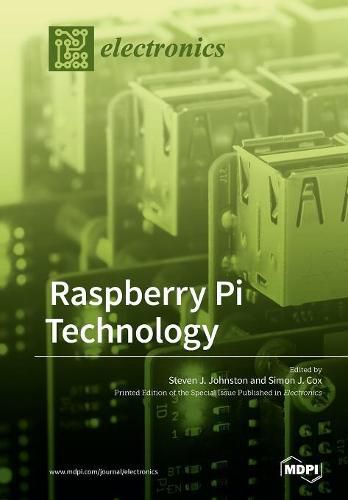Readings Newsletter
Become a Readings Member to make your shopping experience even easier.
Sign in or sign up for free!
You’re not far away from qualifying for FREE standard shipping within Australia
You’ve qualified for FREE standard shipping within Australia
The cart is loading…






This title is printed to order. This book may have been self-published. If so, we cannot guarantee the quality of the content. In the main most books will have gone through the editing process however some may not. We therefore suggest that you be aware of this before ordering this book. If in doubt check either the author or publisher’s details as we are unable to accept any returns unless they are faulty. Please contact us if you have any questions.
The Raspberry Pi Foundation aims to promote the teaching of Computer Science and released the first Raspberry Pi device in February 2012. It is often referred to as a Single Board Computer (SBC), meaning that it runs a full operating system and has sufficient peripherals to start execution without additional hardware.
Although other Single Board Computers (SBC) existed before, the Raspberry Pi Foundation made the SBC accessible to almost anyone, introducing not just a low-cost computer, but one that can bridge the gap to the physical world via standard electronic interfaces; controlled programmatically from the operating system. This has led to the popularity of the Raspberry Pi, not only in education but with industry, hobbyists, prototype builders, gamers and the curious, and it has enabled people to experiment in new ways. In this book, we show how the Raspberry Pi is being used for specific research prototypes; to construct testbeds; applied to Internet of Things applications, as well as educational contexts.
$9.00 standard shipping within Australia
FREE standard shipping within Australia for orders over $100.00
Express & International shipping calculated at checkout
This title is printed to order. This book may have been self-published. If so, we cannot guarantee the quality of the content. In the main most books will have gone through the editing process however some may not. We therefore suggest that you be aware of this before ordering this book. If in doubt check either the author or publisher’s details as we are unable to accept any returns unless they are faulty. Please contact us if you have any questions.
The Raspberry Pi Foundation aims to promote the teaching of Computer Science and released the first Raspberry Pi device in February 2012. It is often referred to as a Single Board Computer (SBC), meaning that it runs a full operating system and has sufficient peripherals to start execution without additional hardware.
Although other Single Board Computers (SBC) existed before, the Raspberry Pi Foundation made the SBC accessible to almost anyone, introducing not just a low-cost computer, but one that can bridge the gap to the physical world via standard electronic interfaces; controlled programmatically from the operating system. This has led to the popularity of the Raspberry Pi, not only in education but with industry, hobbyists, prototype builders, gamers and the curious, and it has enabled people to experiment in new ways. In this book, we show how the Raspberry Pi is being used for specific research prototypes; to construct testbeds; applied to Internet of Things applications, as well as educational contexts.